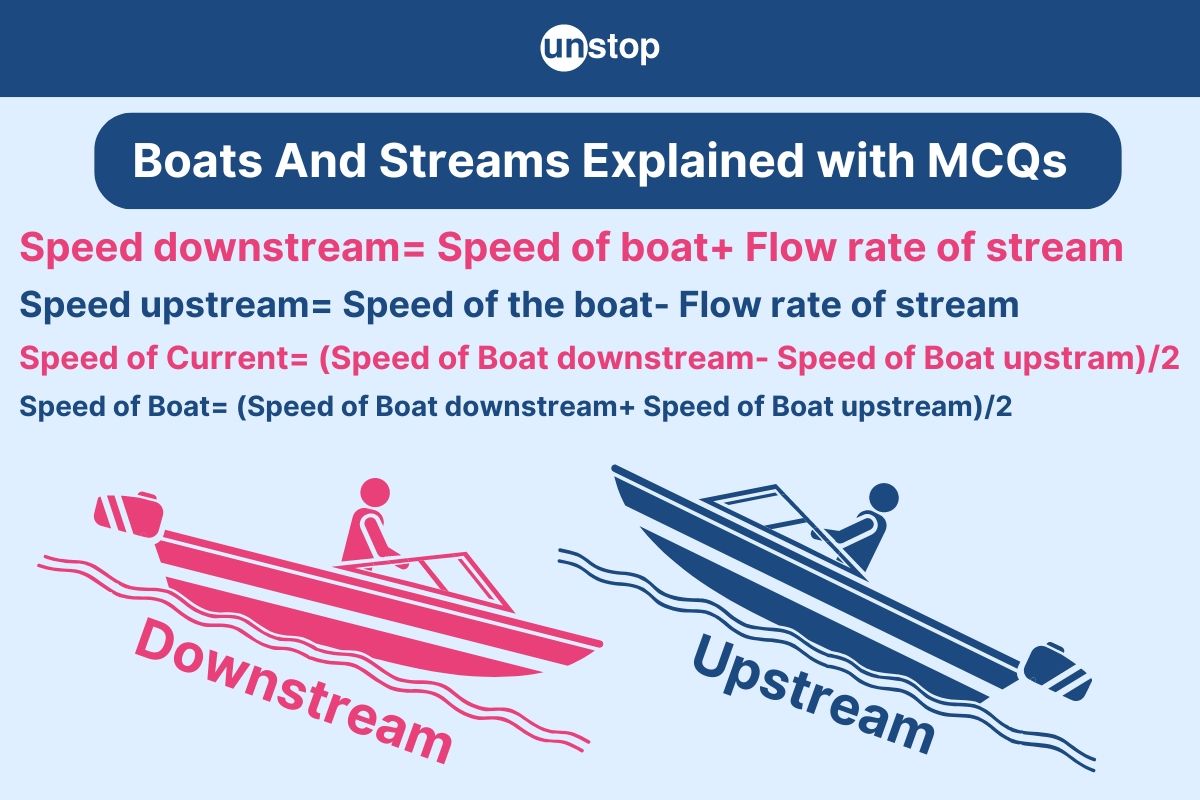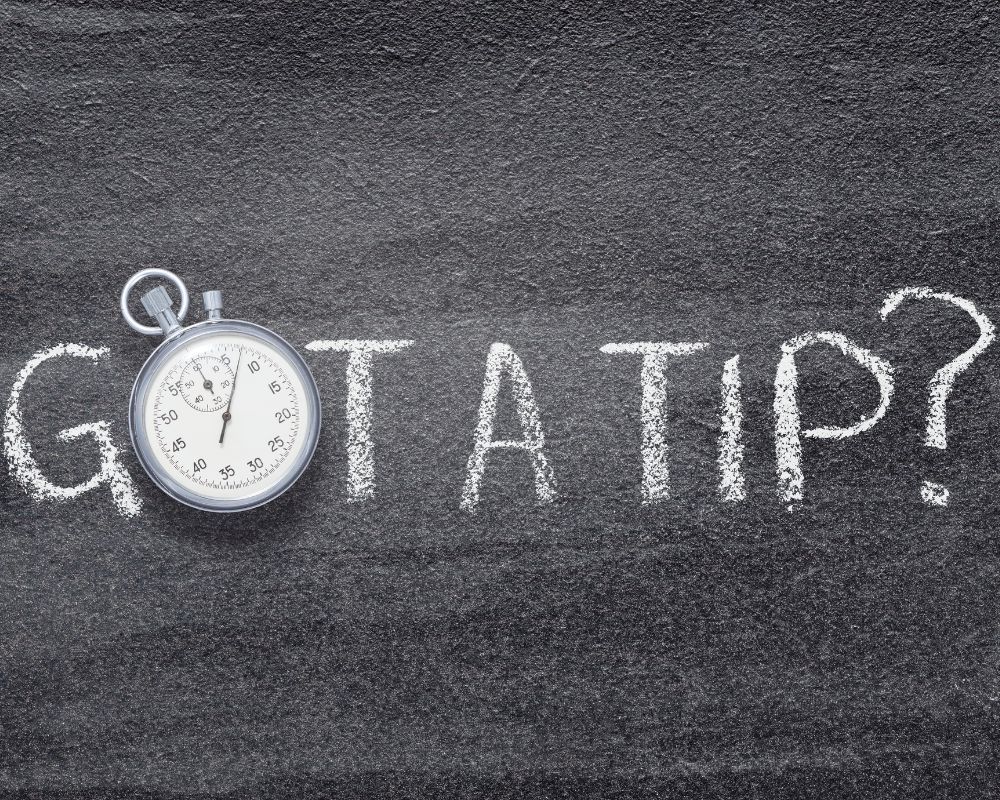- Step 1: The Groundwork
- Step 2: The Three Sections
- Step 3: Practice Makes Improvement
- The Secret Ingredient
- Understanding Basics Of Number Series
- Types Of Number Series Reasoning Questions
- Addition & Multiplication In Number Series
- Square & Cube-Based Number Series Patterns
- Missing Terms & Arranging Sequences
- Tricks & Tips For Solving Number Series
- Selected Number Series Questions With Solutions
- Frequently Asked Questions (FAQs)
- Must Know Terminologies in Blood Relation Questions
- Basic Approaches to Solve Blood Relation Questions
- Types Of Blood Relation Questions
- Tips For Solving Blood Relation Questions
- Multiple Choice Questions (MCQs) with Detailed Explanation
- Conclusion
- Frequently Asked Questions (FAQs)
- Letter Series In Logical Reasoning
- Types Of Letter Series Patterns
- Tips For Solving Letter Series Reasoning
- Best Practice Question Samples With Answers
- Conclusion
- Frequently Asked Questions (FAQs)
- Basics of Problems On Age-Related Questions
- Formula to Solve Problems on Ages-Related Questions
- Types of Age-Related Questions & Examples
- Tips & Tricks for Solving Ages Problems
- Best MCQs on Problems on ages with solved answers
- Conclusion
- Frequently Asked Questions (FAQs)
- Definition of Calendar
- Understanding Days of the Week
- What is a Leap Year?
- Concept of Odd Days in a Century
- Tips For Solving Calendar Reasoning Questions
- Best Calendar Reasoning Questions with Answers (MCQs)
- Frequently Asked Questions (FAQs)
- Basic Concepts of Clock
- Structure of a Clock
- Angle Equilavalence in Clock
- Tips For Solving Clock Questions
- Selected Clock Questions & Answers (MCQs)
- Conclusion
- Frequently Asked Questions (FAQs)
- Understanding The Concept Of Direction Sense
- Tips For Effective Problem-Solving In Direction Sense
- Practical Test Practice Questions And Answers
- Conclusion
- Frequently Asked Questions (FAQs)
- Importance Of Dice Reasoning
- Dice Numbers In Dice Reasoning
- Classification Of Dice
- Constructed Vs Deconstructed Dice
- Tricks & Tips For Solving Dice Problems
- Practice MCQs With Detailed Answers
- Conclusion
- Frequently Asked Questions (FAQs)
- Alphanumeric Series Defined
- Alphanumeric Series In Reasoning Tests
- Tips & Strategies For Solving Alphanumeric Series
- Practice Sample Questions With Detailed Answers
- Conclusion
- Frequently Asked Questions (FAQs)
- Concept Of Mirror Image Reasoning Explained
- Important Terms In Mirror Image Reasoning
- Types Of Mirror Images
- Identifying Correct Mirror Image
- Finding Clock's Mirror Image
- Tips To Solve Mirror Images
- Selected Practice Questions With Answers
- Conclusion
- Frequently Asked Questions (FAQs)
- Concept & Overview Of Input-Output
- Input-Output In Competitive Exams
- Types Of Input-Output Problems
- Strategies, Tips & Tricks For Solving Reasoning Questions
- Selected Practice Questions With Answers
- Conclusion
- Frequently Asked Questions (FAQs)
- Importance Of Finding The Odd One Out
- Tricks And Tips
- How to Find The Odd One Out?
- Solved MCQs with Detailed Explanation
- Conclusion
- Frequently Asked Questions (FAQs)
- Understanding Key Concepts
- Exploring Different Ranking Types
- Formula And Application Of Order And Ranking
- Tips For Solving Order & Ranking
- Selected Practice Questions And Answers
- Conclusion
- Frequently Asked Questions (FAQs)
- Importance Of Pipes & Cistern Aptitude
- Key Terminologies used in Pipes and Cisterns
- Pipes and Cisterns Formula with Examples
- Pipes and Cisterns Shortcut Tricks
- Tips For Solving Pipes & Cistern Problems
- Selected Questions & Answers For Practice (MCQs)
- Conclusion
- Frequently Asked Questions (FAQs)
- Key Concept in Boats and Streams
- Formulas Of Boats & Streams
- Distance & Time Formula
- Tips For Solving Boats & Streams Questions
- Selected Practice Questions With Answers (MCQs)
- Conclusion
- Frequently Asked Questions (FAQs)
- Concept of Mixture and Alligation
- Types Of Alligation Questions
- Formula for Solving Mixture & Alligation
- Tips For Solving Mixture And Alligation
- Selected Questions With Answers For Practice
- Conclusion
- Frequently Asked Questions (FAQs)
- Concepts and Definitions Related to Time and Work
- Important Time And Work Formulas
- Tricks and Tips to Solve Time & Work Questions
- Time And Work MCQs with Detailed Solution
- Conclusion
- Frequently Asked Questions (FAQs)
- What is Harmonic Progression(HP)?
- Formula to find the nth Term in Harmonic Progression
- Formula to find the Sum of the nth Term in HP
- What is Harmonic Mean?
- Harmonic Progression Solved Best MCQs
- Conclusion
- Frequently Asked Questions (FAQs)
- What is Mensuration in Maths?
- What are 2D figures in Mensuration?
- What are 3D figures in Mensuartion?
- Basic Terminologies In Mensuration
- Basic 2D Formulas in Mensuration
- Basic 3D Formulas in Mensuration
- 2D vs 3D in Mensuration
- Solved Questions With Solutions (MCQs)
- Conclusion
- Frequently Asked Questions (FAQs)
- Relationship Between Time, Speed And Distance
- Conversion Units Time, Speed And Distance
- Average & Relative Speed: Two Trains Moving in the same or opposite direction
- Solved MCQs on Time, Speed And Distance
- Conclusion
- Frequently Asked Questions (FAQs)
- What is Simplification in Maths?
- BODMAS Rule in Simplification Explained
- Simplification & Approximation Relation
- Key Terms in Simplification
- Examples Of Simplification Techniques
- Simplification Questions With Solved Answers (MCQs)
- Conclusion
- Frequently Asked Questions (FAQs)
- Height And Distance Important Terms
- Right Angled Triangle In Trigonometry
- Trigonometric Ratios
- Solved Examples For Better Understanding
- Height And Distance Applications In Trigonometry
- Height And Distance Practice Questions & Answers
- Conclusion
- Frequently Asked Questions (FAQs)
- Defining Interest Types
- Simple Interest Vs. Compound Interest
- Selected Solved Questions & Answers
- Conclusion
- Frequently Asked Questions (FAQs)
- Basic Concepts Of Profit And Loss
- Determining Selling Price
- Calculating Discounts
- Formulas For Calculating Profit And Loss
- Examples Of Profit And Loss
- Profit & Loss Questions With Detailed Solution
- Conclusion
- Frequently Asked Questions (FAQs)
- Defining Angle Of Elevation
- Key Terms Used In Angle Of Elevation
- Angle of Elevation Formula with Example
- Angle of Elevation vs. Angle of Depression
- Angle of Elevation MCQs with Answers
- Conclusion
- Frequently Asked Questions (FAQs)
- Defining HCF And LCM
- Calculation Methods Of HCF And LCM
- HCF By Prime Factorization Method
- LCM By Prime Factorization Method
- Difference Between HCF And LCM
- HCF & LCM Practice Questions With Answers
- Conclusion
- Frequently Asked Questions (FAQs)
- What is fraction and decimal?
- Understanding Decimal Fraction
- Place Value in Decimal Fraction
- Mathematical Operations with Decimal Fraction
- Practice with Solved Examples
- Summary
- Frequently Asked Questions
- All About Decimals
- All About Fractions
- How to Convert a Decimal into Fraction
- Simple vs Recurring Decimals
- Converting Recurring Decimals to Fractions
- Conversion Charts
- Practice Questions (With Solutions)
- Closing Thoughts
- Frequently Asked Questions
- What is Arithmetic Mean?
- Arithmetic Mean Formula- Ungroup Data & Group Data
- Merits of Arithmetic Mean
- Demerits of Arithmetic Mean
- Alternatives to Arithmetic Mean
- What is the Weighted Arithmetic Mean?
- Arithmetic vs. Geometric Mean
- Arithmetic Mean Application in Statistical Analysis
- Arithmetic Mean Practice Questions with Explanation
- Frequently Asked Questions
- What is Geometric Progression?
- Key Properties of Geometric Progression
- General Form Of Geometric Progression
- General Term or the Nth Term of Geometric Progression
- The sum of nth Terms of GP
- Types Of Geometric Progression
- Solved Questions and Answers of GP
- Conclusion
- Frequently Asked Questions (FAQs)
- Average in Maths
- Average Formula in Maths
- Differentiating Types of Average
- How to Calculate Average of Negative Numbers?
- Practical Applications of Averages
- Average Questions For Practice
- Frequently Asked Questions
- What is Simple Interest in Maths?
- Simple Interest Formula Explained
- Simple Interest Formula for Years, Months & Days
- Simple Interest Examples & Practice Questions
- Conclusion
- Frequently Asked Questions (FAQs)
- Defining Mathematical Ratios
- Understanding Proportions Fundamentals
- Differentiating Ratios from Proportions
- Ratio and Proportion Formulas
- Properties of Ratio and Proportion
- How to Solve Ratio and Proportion Problems
- Ratio and Proportion Problems (With Solutions)
- Summary
- Frequently Asked Questions
- What is Number in Maths?
- Types of Numbers With Example
- Real vs Complex Numbers Explored
- Basic Operations on Numbers
- Practice Questions (With Solutions)
- Frequently Asked Questions
- What is Arithmetic Progression (AP) in Maths?
- Important Terminologies in Arithmetic Progression
- Basic Terms in Arithmetic Progression
- General Form Of Arithmetic Progression Series
- Types Of Arithmetic Progression
- Solved Questions With Explanation (MCQs)
- Conclusion
- Frequently Asked Questions (FAQs)
- Understanding Basic Concept
- Importance Of Train Problems In Aptitude
- Tips To Solve Train Problems
- Selected Practice Questions & Answers
- Conclusion
- Frequently Asked Questions (FAQs)
- Definition Of Mode
- Calculating Mode For Ungrouped Data
- Calculating Mode For Grouped Data
- Bimodal, Trimodal & Multimodal Distributions
- Comparing Mean, Median & Mode
- Selected Practice Questions With Answers
- Conclusion
- Frequently Asked Questions (FAQs)
- Important Concept In Races And Games
- Calculating Time, Speed & Distance
- Importance Of Races And Games Problems
- Sample Practice Questions With Answers
- Conclusion
- Frequently Asked Questions (FAQs)
- Types Of Partnership
- Formula For Partnership Questions
- Tips To Solve Partnership Aptitude Questions
- Selected Partnership Questions (Practice MCQs)
- Conclusion
- Frequently Asked Questions (FAQs)
Boats And Streams: Formula, Top Aptitude Questions & Answers (MCQs)

Exploring the fascinating world of boats and streams unveils a realm where mathematical concepts merge seamlessly with real-world applications. Let us delve into the principles governing the speed of a boat in still water to decipher how streams influence its motion.
Key Concept in Boats and Streams
In boat and stream problems, the key concepts revolve around the relative speed of the boat in still water and the speed of the stream (current). Here are the basic concepts and key terms:
Speed in Still Water
- The speed of the boat if there were no currents.
- Represented as B (Boat's speed in still water).
Stream (or Current) Speed
- The speed at which the stream flows.
- Represented as S (Stream speed).
Downstream
Downstream refers to the movement of the boat in the direction of the stream.
- Downstream speed = Speed of the boat + Speed of the stream
- Downstream speed=B+S
Upstream
Upstream refers to the movement of the boat against the direction of the stream.
- Upstream speed = Speed of the boat − Speed of the stream
- Upstream speed=B−S
Time
Time is calculated using the formula: Time=Distance/Speed
- For upstream or downstream problems, use respective speeds.
Relative Speed
- Downstream relative speed = Sum of the boat's speed and stream's speed.
- Upstream relative speed = Difference between the boat's speed and the stream's speed.
Let us assume that a boat’s speed in still water is 10 km/h and the stream’s speed is 2 km/h:
- Downstream speed = 10 + 2 = 12 km/h
- Upstream speed = 10 − 2 = 8 km/h
These concepts help solve questions involving distances, times, and speeds in boat and stream problems.
Importance Of Boats and Streams
Solving boat problems helps improve critical thinking and math skills. It makes people better at solving different kinds of problems. The relevance of boat problems extends to competitive exams and aptitude tests, where such questions are commonly featured.
Click here to consistently enhance and upskill your quantitative aptitude and reasoning prowess.

Formulas Of Boats & Streams
Calculating speed in both upstream and downstream scenarios requires specific formulas in boats and streams:

When calculating speed downstream, use the equation:
Speed downstream= Speed of boat+Flow rate of stream
Conversely, when determining speed upstream, utilize the formula:
Speed upstream=Speed of the boat-Flow rate of stream
To calculate the speed of a boat in still water, use the formula:
Speed of Boat = (Speed of Boat downstream + Speed of Boat upstream) / 2
Finding the speed of the current involves using this formula:
Speed of Current = (Speed of Boat downstream - Speed of Boat upstream) / 2
Distance & Time Formula
To find the distance traveled downstream, multiply the total time taken by the combined speeds of the boat and stream.
Similarly, to calculate the time taken in an upstream scenario, divide the total distance by the difference between the boat's speed and the stream's flow rate.
Tips For Solving Boats & Streams Questions
Let's study some of the tips for solving boats and streams questions:

Shortcut for Calculations
A helpful tip for boat and stream problems is to know that the difference between downstream and upstream speeds equals the speed of the current.
Systematic Approach
To solve boat and stream problems, first, understand the basic techniques. Use hints in the question as a starting point. Break down the problem into smaller points for better tackling.
Identifying Patterns
To do well in boat and stream problems, learn about common questions like downstream and upstream situations, relative speed calculations, and time-distance connections.
Time Management
Set time limits for each step of solving a problem to manage time better. Understand the data given before doing calculations. Use shortcuts like cross-multiplication to save time.
Selected Practice Questions With Answers (MCQs)
Let us go through some of the most relevant and up-to-date questions about boats and streams with detailed explanations to arrive at the solution:
Question 1. What is the time taken by a boat to travel 68 km downstream if it can travel at a speed of 18 km/hr in still water? Take the speed of the stream as 5 km/hr.
a) 2 hours
b) 3 hours
c) 4 hours
d) 5 hours
Solution: Speed of the boat in still water (B) = 18 km/hr
Speed of the stream (S) = 5 km/hr
Distance to be travelled downstream (D) = 68 km
The effective speed of the boat downstream is the sum of the boat's speed in still water and the speed of the stream.
Effective Speed Downstream = Speed of Boat + Speed of Stream = 18 km/hr + 5 km/hr = 23 km/hr
Time = Distance / Speed
Time taken to travel downstream = Distance Downstream / Effective Speed Downstream = 68 km / 23 km/hr= 2.957 hours (approx)
Since the time is not in whole hours, we need to convert the fraction of an hour into minutes. (0.957 hours * 60 minutes/hour= 57.42 minutes (approx)
The boat takes approximately 2 hours and 57 minutes to travel 68 km downstream, which is approx. 3 hours.
Question 2. What is the speed of a man against the current if his speed with the current is 18 km/hr? Take the speed of the current as 3.5 km/hr.
a) 14.5 km/hr
b) 15.5 km/hr
c) 16.5 km/hr
d) 17.5 km/hr
Solution: The speed of the man with the current = 18 km/hr
Speed of the current = 3.5 km/hr
We need to find the speed of the man against the current.
The effective speed of the man with the current is the sum of his speed and the speed of the current.
Effective Speed with the Current=Speed of the Man+Speed of the Current =18 km/hr+3.5 km/hr=21.5km/hr
The effective speed of the man against the current is the difference between his speed and the speed of the current.
Effective Speed against the Current=Speed of the Man−Speed of the Current =18 km/hr−3.5 km/hr=14.5km/hr
So, the speed of the man against the current is 14.5 km/hr.
Question 3. A motorboat can travel 15 km/hr in still water. If it travels 12 km downstream in 1 hour, what is the speed of the stream?
a) 3 km/hr
b) 4 km/hr
c) 5 km/hr
d) 6 km/hr
Solution: Speed of the motorboat in still water (B) = 15 km/hr
Distance travelled downstream (D) = 12 km
Time taken for downstream journey = 1 hour
Calculate the speed downstream using the formula: Speed downstream=Distance/Time.
Speed downstream=12 km/1 hour=12 km/hr
Using the concept that the speed downstream is equal to the speed of the boat in still water minus the speed of the stream:
Speed downstream=B−S
where S is the speed of the stream.
Substitute the known values into the equation:
12=15−S
Solve for S:
S=15−12
S=3
So, the speed of the stream is 3 km/hr.
Substituting S=3 back into the equation to ensure it satisfies the given conditions:
Speed downstream=Speed of the boat in still water−Speed of stream
12=15−3=12
Question 4. A rowboat can travel 8 km/hr in still water. If it takes the rowboat 2 hours to row 12 km upstream, what is the speed of the stream?
a) 2 km/hr
b) 3 km/hr
c) 4 km/hr
d) 5 km/hr
Solution: Speed of the rowboat in still water (B) = 8 km/hr
Distance travelled upstream (D) = 12 km
Time taken for the upstream journey = 2 hours
Calculate the speed upstream using the formula: Speed upstream=Distance/Time.
Speed upstream=12 km/2 hours=6 km/hr
Using the concept that the speed upstream is equal to the speed of the boat in still water minus the speed of the stream:
Speed upstream=B−S, where S is the speed of the stream.
Substitute the known values into the equation:
6=8−S
S=8−6
S=2
Therefore, the speed of the stream is indeed 2 km/hr.
Question 5. A canoe can travel 12 km/hr in still water. If it takes the canoe 3 hours to paddle 24 km downstream, what is the speed of the stream?
A) 2 km/hr
B) 3 km/hr
C) 4 km/hr
D) 5 km/hr
Solution: Speed of the canoe in still water (B) = 12 km/hr
Distance travelled downstream (D) = 24 km
Time taken for the downstream journey = 3 hours
We need to find the speed of the stream (S).
Speed downstream = Distance / Time = 24 km / 3 hours = 8 km/hr
Speed downstream=Speed of the canoe in still water−Speed of stream
8=12−S
S=12−8
S=4
Substitute the value of S back into the equation to ensure it satisfies the given conditions:
Speed downstream=Speed of the canoe in still water−Speed of stream
8=12−4
8=8
Since the equation holds true, our solution is correct.
Therefore, the speed of the stream is 4 km/hr.
Question 6. A motorboat can travel at a speed of 20 km/hr in still water. It takes the motorboat 2 hours to travel 30 km upstream. What is the speed of the stream?
a) 5 km/hr
b) 7.5 km/hr
c) 10 km/hr
d) 12.5 km/hr
Solution: Speed of the motorboat in still water (B) = 20 km/hr
Distance travelled upstream (D) = 30 km
Time taken for the upstream journey = 2 hours
We need to find the speed of the stream (S).
Speed upstream = Distance / Time = 30 km / 2 hours = 15 km/hr
Speed upstream is equal to the speed of the boat in still water minus the speed of the stream
15=20−S
S=20−15
S=5
Therefore, the speed of the stream is 5 km/hr.
Question 7. A boat travels 45 km upstream and 63 km downstream in a certain time. If the speed of the stream is 3 km/hour, what is the speed of the boat in still water?
a) 15 km/hour
b) 18 km/hour
c) 20 km/hour
d) 24 km/hour
Solution: To solve this question, let x km/hr be the speed of the boat in still water.
The boat's relative upstream speed is (x−3) km/hour, and its relative downstream speed is (x+3) km/hour.
According to the given information:
Time taken to travel upstream = Time taken to travel downstream
Distance traveled upstream = 45 km
Distance traveled downstream = 63 km
Using the formula Time = Distance / Speed, we can set up the following equation based on time, distance, and speed relationships:
For the upstream journey:
45/x−3
For the downstream journey:
63/x+3
Since the times are equal, we can set these expressions equal to each other:
45/x−3=63/x+3
Let us find the value of x, which represents the speed of the boat in still water:
45/x−3=63/x+3
45(x+3)=63(x−3)
45x+135=63x−189
135+189=63x−45x
324=18x
18x=324
x=324/18
x=18
Therefore, the speed of the boat in still water is 18 km/hour.
Question 8. A boat travels from point A to point B downstream in 4 hours. The return journey from point B to point A upstream takes 9 hours. Take the speed of the stream as 2 km/hour. Then, what is the speed of the boat in still water?
a) 6 km/hour
b) 8 km/hour
c) 10 km/hour
d) 5.2 km/hour
Solution: Speed of the stream = 2 km/hour
Time taken downstream (from A to B) = 4 hours
Time taken upstream (from B to A) = 9 hours
Let's denote the speed of the boat in still water as x km/hour and the distance between point A and point B as d km.
When the boat travels downstream, its effective speed is x+2 km/hour, and when it travels upstream, its effective speed is x−2 km/hour.
We have the following equations:
For the downstream journey:
d/x+2=4
For the upstream journey:
d/x−2=9
We need to solve this system of equations to find the value of x.
Let's start with equation 1:
d/x+2=4
d=4(x+2)
Now, let's work with equation 2:
d/x−2=9
d=9(x−2)
Since both expressions are equal to d, we can set them equal to each other:
4(x+2)=9(x−2)
4x+8=9x−18
8+18=9x−4x
26=5x
x=26/5
x=5.2
So, the speed of the boat in still water is 5.2 km/hour.
Question 9. A boat takes 6 hours to cover a certain distance downstream and takes 9 hours to cover the same distance upstream. Take the speed of the stream as 4 km/hour. Then what is the speed of the boat in still water?
a) 8 km/hour
b) 10 km/hour
c) 20 km/hour
d) 14 km/hour
Solution: Let's denote the speed of the boat in still water as x km/hour.
The distance between the points downstream and upstream is d km
Speed of the stream = 4 km/hour
Time taken downstream = 6 hours
Time taken upstream = 9 hours
When the boat travels downstream, its effective speed is x+4 km/hour, and when it travels upstream, its effective speed is x−4 km/hour.
We have the following equations:
For the downstream journey:
d/x+4=6
For the upstream journey:
d/x−4=9
We need to solve this system of equations to find the value of x.
Equation 1:
d/x+4=6
d=6(x+4)
Equation 2:
d/x−4=9
d=9(x−4)
Since both expressions are equal to d, we can set them equal to each other:
6(x+4)=9(x−4)
6x+24=9x−36
24+36=9x−6x
60=3x
x=60/3=20
So, the speed of the boat in still water is 20 km/hour.
Question 10. A boat can travel 54 km downstream in 3 hours. Take the speed of the stream as 3 km/hour. Then what is the speed of the boat in still water?
a) 15 km/hour
b) 18 km/hour
c) 20 km/hour
d) 24 km/hour
Solution: To solve this problem, we can use the formula for the speed of the boat in still water,
Speed of boat in still water= Distance travelled downstream/ Time taken−Speed of the stream
Given:
Distance traveled downstream = 54 km
Time taken = 3 hours
Speed of the stream = 3 km/hour
Using these values in the formula:
Speed of boat in still water=54/3−3=18−3=15 km/hour
So, the speed of the boat in still water is 15 km/hour.
Conclusion
Studying boat problems, basic concepts, formulas, tips, questions, and quizzes helps you learn about boats and streams. To solve aptitude questions well, understand upstream-downstream relationships and key formulas.
Tips to improve problem-solving and sample questions give real-life practice. To get better at boat problems and math questions, practice regularly.
Time For A Short Quiz
Frequently Asked Questions (FAQs)
1. What is the meaning of still water in boats and streams?
Still water in boats and streams refers to calm and undisturbed water, without any visible movement or ripples, with its speed at 0 (zero).
2. What is the formula for boats and streams?
The formula for calculating the speed of a boat in still water when moving upstream or downstream in a stream is as follows:
Let the speed of the boat in still water be B km/hr, the stream speed be S km/hr, and the speed of the boat upstream or downstream be U km/hr.
-
When moving upstream: Speed of boat in still water - Speed of stream = Speed of boat upstream (B - S) = U
-
When moving downstream: Speed of boat in still water + Speed of stream = Speed of boat downstream (B + S) = D
3. What are some key tips for efficiently solving boat and stream problems?
To tackle boat and stream problems successfully, it is recommended to practice regularly, understand the basic concepts thoroughly, visualize scenarios, break down complex questions into simpler parts, and utilize formulas effectively.
4. What is the theory of boat and stream?
The theory of boat and stream involves understanding the relationship between the speed of a boat or swimmer in still water and the speed of the stream or current. By applying formulas related to relative speed, distance, and time, individuals can accurately calculate how long it will take for a boat to travel a certain distance in different conditions.
5. How do you calculate a boat in still water?
To calculate the speed of a boat in still water, you need to consider the boat's velocity without any external factors affecting its movement. This can be determined by measuring the time it takes for the boat to cover a certain distance when there is no current or wind influencing its speed. By dividing the distance travelled by the time taken, you can calculate the boat's speed in still water.
Suggested readings:
- Clock Questions: Selected Question & Answer (Aptitude) Explained
- Calendar Questions- Selected Aptitude Questions & Answers
- Pipes And Cisterns | Top Selected Question With Answer & Formula
- Problems On Age - Mastering Best Aptitude Questions & Solutions
- Letter & Symbol Series Explained- Top Selected Question & Answer
Instinctively, I fall for nature, music, humor, reading, writing, listening, traveling, observing, learning, unlearning, friendship, exercise, etc., all these from the cradle to the grave- that's ME! It's my irrefutable belief in the uniqueness of all. I'll vehemently defend your right to be your best while I expect the same from you!
Login to continue reading
And access exclusive content, personalized recommendations, and career-boosting opportunities.
Subscribe
to our newsletter
















Comments
Add comment